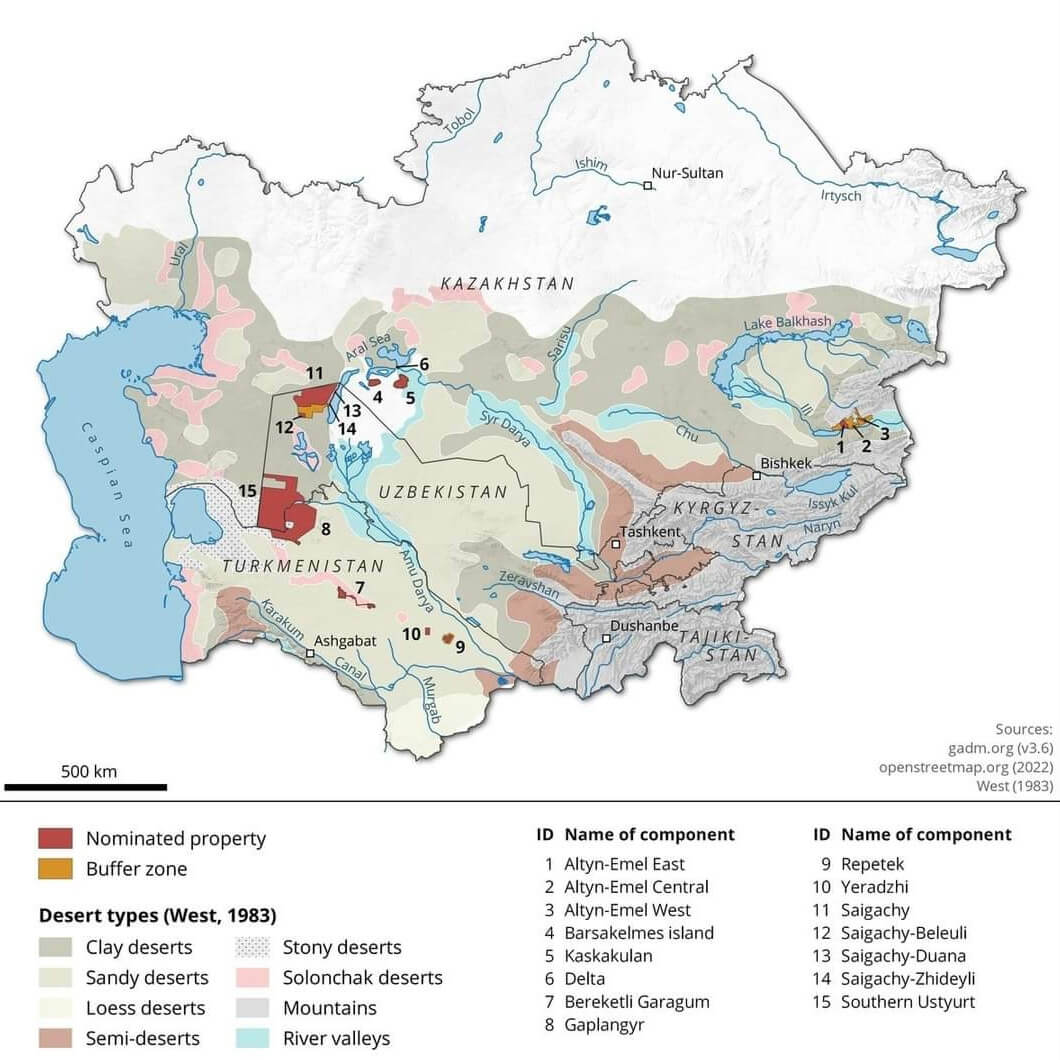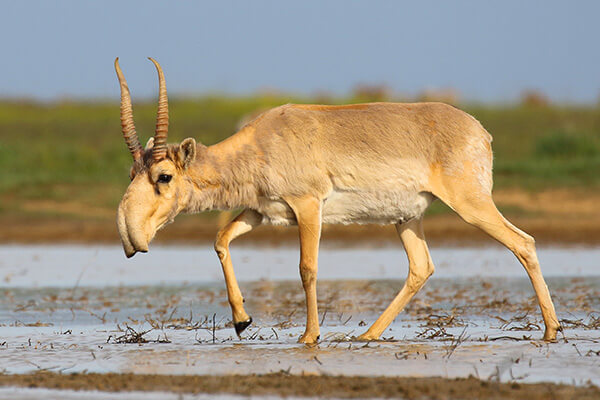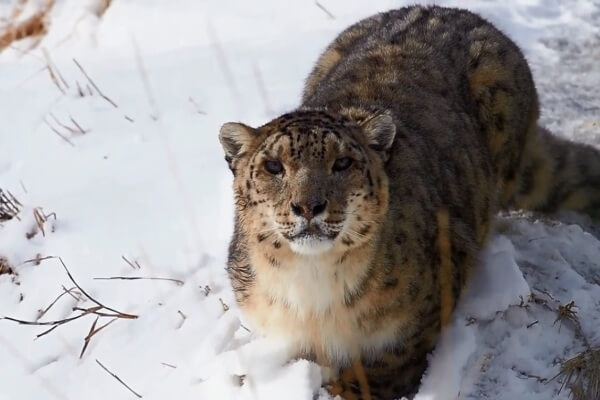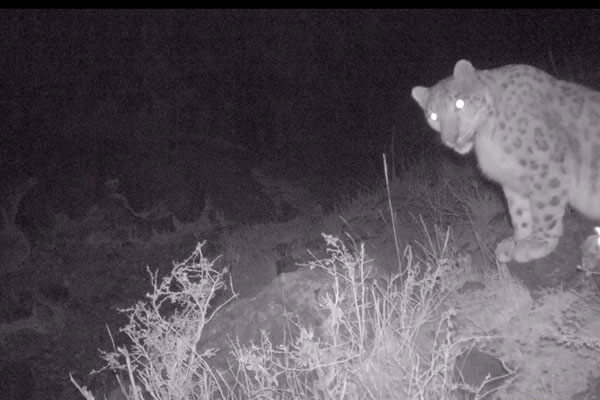On September 20, 2023, by the decision of the 45th session of the UNESCO World Heritage Committee (September 10-25, Riyadh, Saudi Arabia), the Turanian deserts in Kazakhstan, Turkmenistan and Uzbekistan are included in the UNESCO World Natural Heritage List.
The included sites are located in three countries on the territories of four desert reserves, two national parks and one landscape reserve in Kazakhstan, Turkmenistan and Uzbekistan, with a total area of more than three million hectares.
Temperate deserts were the only global biome not yet represented on the UNESCO World Natural Heritage list. The inclusion of the Turanian temperate deserts in the World Natural Heritage List is also important from the point of view of preserving unique biological diversity, in particular, this will allow the protection of 41 species of mammals, 167 species of birds, 42 species of reptiles to be brought to the international level, among the fauna of which the kulan, saiga, goitered gazelle, urial and many species of animals and plants that are endangered on a global scale, are of particular value.
In Kazakhstan, the sites are located in the south of the country. These are the Barsakelmes Nature Reserve and the Altyn Emel National Park.
The development of the transnational dossier project began in 2019 within the framework of the Central Asian Desert Initiative (CADI) project by the Michael Succow Foundation with financial support from the International Climate Initiative (Germany).
After submitting the nomination dossier in January 2022 for consideration by the UNESCO World Heritage Center, visits by experts from the International Union for Conservation of Nature (IUCN) were carried out in October-November 2022 to study the nominated sites in each of the participating countries.
The transnational nomination Turanian Temperate Deserts is the second site in Uzbekistan included in the UNESCO World Natural Heritage List. Earlier in 2016, the transboundary nomination “Western Tien Shan” was included in the UNESCO World Cultural and Natural Heritage List from Kazakhstan, Kyrgyzstan and Uzbekistan.
In the future, it is planned to develop a joint action plan to maintain a strict monitoring regime in each component and monitor the state of conservation of this natural object in the long term, maintaining biodiversity and the integrity of the unique natural complex.








